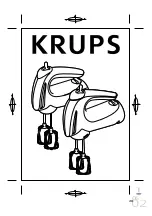
Compressor Types
11
Compressor Types
Dynamics processors are generally used to correct or control signal levels, although they can also be used cre-
atively to shape a sound’s volume envelope. The following sections explain the COMP, EXPANDER, and
COMPANDER-(H/S) compressor, their parameters, and general applications.
COMP
The COMP processor is a compressor that attenuates
signals above a specified threshold, providing automatic
level control.
Vocalists that tend to move toward and away from the
microphone while singing produce fluctuating signal
levels; sometimes loud, sometimes soft. Likewise, acous-
tic instruments with a large dynamic range produce
sound levels from pianissimo (very soft) through to for-
tissimo (very loud). In these situations, it is often diffi-
cult to set an average fader level that will allow a voice or
instrument to be heard clearly throughout a song or
piece of music. This is where the compressor comes in
with automatic level control. By automatically reducing
high levels, thus effectively reducing the dynamic range,
the compressor makes it much easier to control signals
and set appropriate fader levels. Reducing the dynamic
range also means that recording levels can be set higher,
therefore improving signal-to-noise performance.
[Compressor]
The COMP processor can also be used as a limiter,
which is essentially a compressor with a high ratio set-
ting. Compression ratios above 10:1 are considered to
limit signals rather than compress them. When an input
signal exceeds the specified threshold level, its level is
automatically reduced to the threshold level. This means
that the limiter’s output level never actually exceeds the
threshold level. Limiters are often used to prevent signals
from overloading amplifiers and tape recorders. A lim-
iter with a relatively high threshold, for example, could
be used with the stereo outputs to prevent amplifier and
speaker overload.
[Limiter]
THRESHOLD
—This determines the level of input signal
required to trigger the compressor. Signals at a level
below the threshold pass through the compressor unaf-
fected. Signals at and above the threshold level are com-
pressed by the amount specified using the Ratio
parameter. The trigger signal is sourced using the KEY
IN parameter.
OUT GAIN
—This sets the compressor’s output signal
level, and can be used to compensate for the overall level
change caused by the compression process.
–70
–60
–50
–40
–30
–20
–10
0
+10
+20
–70
–60
–50
–40
–30
–20
–10
0
+10
+20
Input Level (dB)
Output Level (dB)
Knee = Hard
Threshold = –20dB
Compression ratio = 2:1
Parameter
Range
THRESHOLD
–54 dB to 0 dB (1 dB steps)
OUT GAIN
±0.0 dB to +18.0 dB (0.5 dB steps)
KNEE
HARD, SOFT 1, SOFT 2, SOFT 3,
SOFT 4, SOFT 5
ATTACK
0–120 ms (1 ms steps)
RELEASE
5 ms–42.3 s (fs = 48 kHz)
6 ms–46 s (fs = 44.1 kHz)
RATIO
1:1, 1.1:1, 1.3:1, 1.5:1, 1.7:1, 2:1,
2.5:1, 3:1, 3.5:1, 4:1, 5:1, 6:1, 8:1,
10:1, 20:1,
∞
:1 (16 points)
INPUT FILTER
HPF/LPF
HPF (high-pass filter) or
LPF (low-pass filter)
INPUT FILTER
ON/OFF
ON or OFF
INPUT FILTER
FREQUENCY
20 Hz–20 kHz (121 steps)
–70
–60
–50
–40
–30
–20
–10
0
+10
+20
–70
–60
–50
–40
–30
–20
–10
0
+10
+20
Input Level (dB)
Output Level (dB)
Knee = Hard
Threshold = –20dB
Compression ratio = 20:1
Содержание CS1D
Страница 1: ...Owner s Manual ...
Страница 5: ...Operating Manual ...
Страница 6: ...Operating Manual Start up ...
Страница 55: ...Operating Manual Basic Operation ...
Страница 214: ...Reference Manual ...
Страница 215: ...Reference Manual Hardware ...
Страница 332: ...Reference Manual Software ...
Страница 530: ...Reference Manual Appendices ...
















































